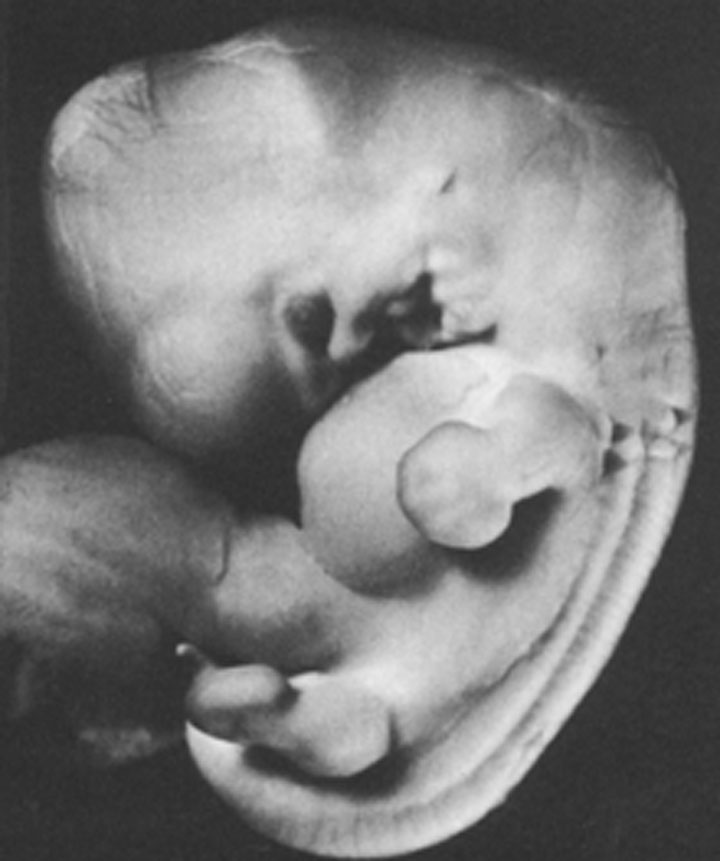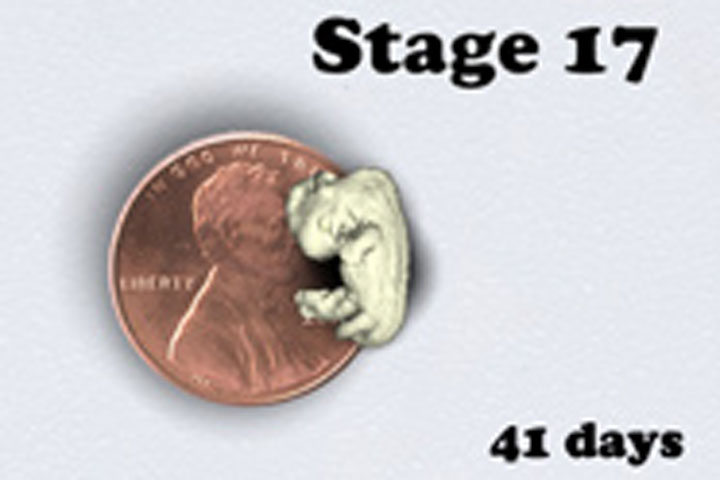Kevin Duffy, independent public health consultant, explains the reality of an early medical at-home abortion.
On 30 March 2020, Matt Hancock, the Secretary of State for Health and Social Care, approved a pregnant woman’s home as a place in which the abortion pill could be self-administered.
Data released by the Department of Health and Social Care show that each month since this approval was granted, 10,000 women have self-administered their early medical abortion (EMA) at home.
These data tell us that 80% of all abortions across England and Wales are performed by the end of the first seven weeks of pregnancy (measured from the first day of a woman’s last period).
Seven weeks is early in the pregnancy and abortion supporters go to great lengths to assure women that at this stage, their ‘pregnancy’ is nothing more than a clump of cells, not yet a baby. So, let’s explore this a bit more.
How a baby develops in utero
The Virtual Human Embryo project is a great resource, tracking a baby’s development through the 23 Carnegie stages.

Stage 17 occurs at 41 days after conception, which is equivalent to 7 weeks gestational age measured from the last menstrual period. These images show what a seven-week old baby in utero looks like. The U.S. cent coin is about the same size as a UK one pence piece.

How does the NHS describe a developing baby?
When describing the weekly development of pregnancy, the NHS uses the terms ‘mother’ and ‘baby’. It provides this week-by-week outline of how a baby develops in his (or hers, but not its) mother’s womb:
- Conception occurs at week 2 (counting from the mother’s last period), and now there’s a new, unique, living, human being.
- In week 3, the baby implants into the lining of his mother’s womb.
- From week 4, cells from the baby are beginning to connect with the mother’s blood supply, the placenta has started to form.
- At 5 weeks, the baby’s nervous system is already developing and the foundations for its major organs are in place. The heart has started to form, and some blood vessels now connect the baby and mother with what will become the umbilical cord.
- At 6 weeks, ultrasound scans can distinguish the developing heart, which is beating, the head where the brain is forming, and ‘buds’ and ‘dimples’ which will become arms, legs, eyes, and ears. The baby is covered with a thin layer of see-through skin.
- By 7 weeks, the baby has grown to about 10mm long from head to bottom. The brain is growing rapidly, and this results in the head growing faster than the rest of the body. The embryo has a large forehead, and the eyes and ears continue to develop. Nerve cells continue to multiply and develop as the brain and spinal cord (the nervous system) starts to take shape.
This is how the NHS Start4Life website describes a baby at 7 weeks:
Your baby is around 10mm long from head to bottom, which is about the size of a grape. Let’s be honest, it looks a bit like an alien at this point! The brain is growing more quickly than the rest of the body, so the head is supersized with a large forehead. There are small dimples where the nose and ears will be. The eyelids are beginning to grow and cover the eyes.
The stumpy little limb buds are starting to form cartilage which will make the bones for the arms and legs. The arm buds are getting longer, and the flattened ends will soon become tiny hands.
The baby’s brain and spinal cord are taking shape at a fast pace. Your baby is generating around one hundred new brain cells every minute! Baby will now have a rhythmic heartbeat, which is amazing, isn’t it?
Ultrasound Scan at 7 weeks
Grazie P Christie MD, posts video and stills of ultrasound scans on Twitter. In this one she shows a baby at 7 weeks 6 days, clearly visible on screen, and she measures the baby’s heart rate at 163 beats per minute. (The sound is poor for the first few seconds of this, but it does improve.)
How does the abortion pill work?
There are two medications comprising what we often refer to as the abortion pill. The first of these is called mifepristone and it works by blocking the hormone progesterone. Without progesterone, the lining of the uterus breaks down and since this is the only source of sustenance for the baby, the administration of mifepristone is most likely to result in the baby’s death. There is a small possibility that death has not occurred before the administration of the second medication and subsequent expulsion.
The second medication is called misoprostol and is administered 24-48 hours after taking the mifepristone. This makes the womb contract, resulting in the expulsion of the baby, the placenta, and the lining of the womb, during which the mother will experience cramps and bleeding.
Abortion providers often describe an early medical abortion as being like a heavy period or a natural miscarriage; of course, neither of these two comparisons are appropriate.
- A woman has her period in a monthly cycle when she is not pregnant, during which she will bleed and pass the lining of her womb. During an early medical abortion, in addition to these, she also expels her dead baby.
- The physical experience of an early medical abortion might be like a natural miscarriage but there is an incredibly significant difference between these. Often, we don’t know why a miscarriage occurs but an EMA is always caused by the administration of abortifacient medications which, in the UK, are prescribed and provided by healthcare professionals. The death of the baby by miscarriage is beyond the control of the mother and certainly never something she has wished for; the death of the baby by early medical abortion at home is fully in the control of the mother, it is by her choice.
1-in-6 pregnant women choose abortion.
Whether their pregnancy was intended or not, most women will delight in the continued development and subsequent birth of their new baby. One-in-six pregnant women will however choose otherwise, and, for many different reasons, these women will decide to end their pregnancies and abort their babies.
DHSC data for 2020 currently projects that 215,000 women in England and Wales will have an abortion this year; there is an increasing trend, in 2019 the total was 207,000.
Every month across England and Wales, 10,000 women will choose to have their abortion at home; they will self-administer the abortion pills prescribed and supplied by the NHS and its implementation partners BPAS and Marie Stopes UK. The misoprostol will induce contractions causing the expulsion of the baby and his mother will dispose of her dead baby either in the toilet or wrapped in a sanitary pad and placed into the domestic waste.
Early medical abortion is not natural, it’s not a simple, pain-free, mess-free way to end your ‘pregnancy’.
Early medical abortion is the deliberate ending of a developing baby’s life and disposal of his dead body into the sewage and domestic waste. This is what many in our society today are calling ‘CHOICE’.

